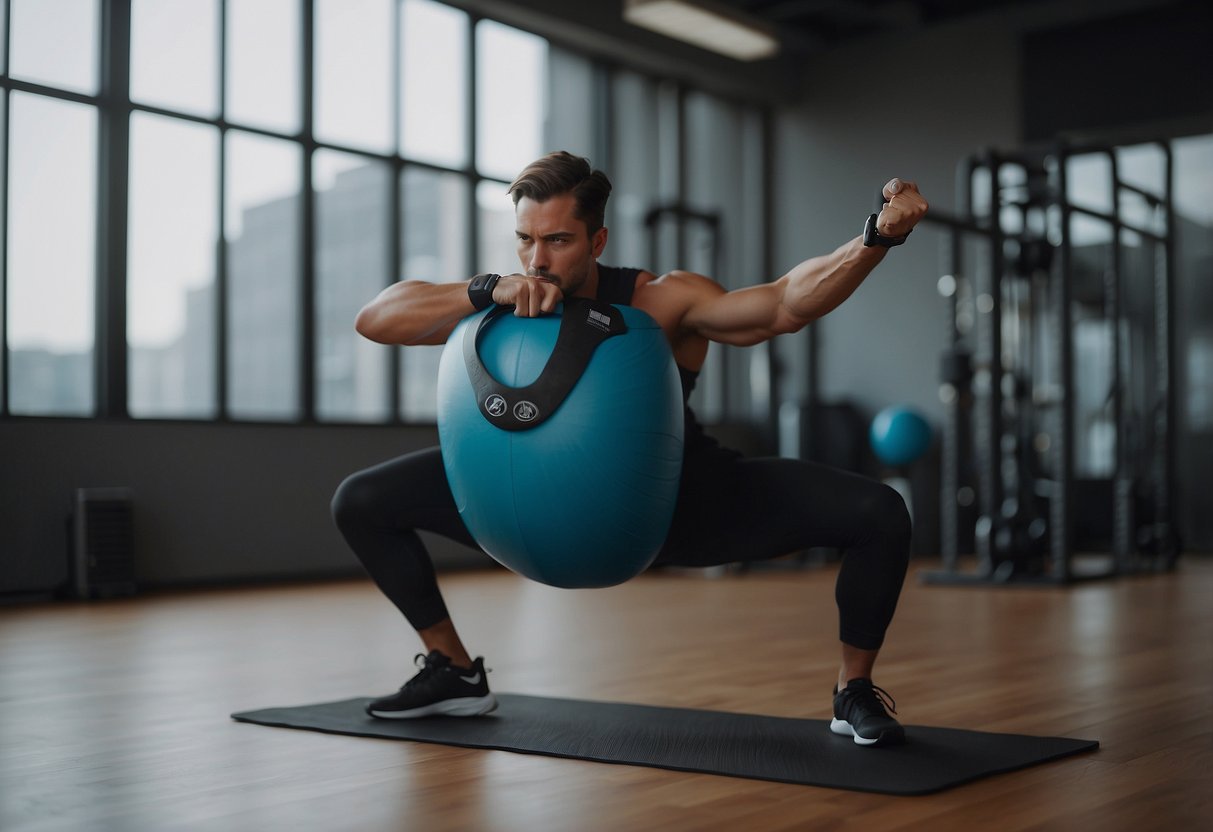
10. Hamstring Stretch
The hamstring stretch is essential for maintaining flexibility and preventing injuries in the back of the thigh.
To perform the hamstring stretch, begin by sitting on the ground with one leg extended straight and the other leg bent.
Reach forward toward the toes of the extended leg, keeping the back straight.
Hold the stretch for 20-30 seconds, then switch legs. Repeat the stretch 2-3 times for each leg.
This exercise helps lengthen the hamstring muscles, reducing the risk of strains during physical activity.
Regular practice can improve overall flexibility and enhance athletic performance by allowing for a greater range of motion.
Make sure to breathe deeply and avoid bouncing during the stretch to prevent muscle injury.
It’s recommended to include the hamstring stretch in your routine, especially if you engage in activities that demand lower body strength.
Understanding Mobility and Injury Prevention
Mobility plays a crucial role in maintaining bodily function and preventing injuries. Poor mobility can lead to common injuries that hinder daily activities and athletic performance.
The Importance of Mobility
Mobility is essential for joint health and overall movement. Proper mobility allows for a full range of motion, which is vital for performing daily tasks efficiently and safely.
When joints and muscles move freely, stress on the body is minimized. This reduces the risk of strain and overuse injuries. Additionally, good mobility supports better body mechanics and posture, which are critical for injury prevention.
Incorporating mobility exercises into daily routines can enhance athletic performance and prolong the ability to engage in physical activities. Regular mobility work can also help alleviate minor aches and pains, leading to a better quality of life.
Common Injuries from Poor Mobility
Lack of mobility often results in injuries such as strains, sprains, and joint issues. For example, limited ankle mobility can contribute to knee pain or hip problems, creating a chain reaction of complications.
Poor shoulder mobility may lead to rotator cuff injuries or shoulder impingement, both of which are common in athletes and individuals with repetitive overhead movements.
Inflexibility in the hips can cause lower back pain, as the body compensates for the restricted movement in the hips. This compensation can strain the lower back and lead to chronic discomfort.
By understanding these common injuries linked to poor mobility, individuals can take proactive measures to improve their movement patterns and prevent potential issues.
Key Principles of Effective Mobility Exercises
Effective mobility exercises rely on a mixture of dynamic and static stretching as well as a commitment to frequency and consistency. These principles ensure comprehensive improvements in flexibility, reducing the likelihood of injuries.
Dynamic vs Static Stretching
Dynamic stretching involves moving parts of the body through a full range of motion. This type of stretching is especially useful before engaging in physical activity, as it helps to increase blood flow and prepare muscles for exercise. Movements could include leg swings, arm circles, or torso twists.
In contrast, static stretching involves holding a position for a set period, typically between 15 to 60 seconds. This form of stretching helps to increase flexibility and reduce muscle tension over time. Examples are hamstring stretches, calf stretches, or shoulder stretches. Both types of stretching are important for a well-rounded mobility routine.
Frequency and Consistency
To maintain and improve mobility, frequency and consistency are crucial. It is recommended to integrate mobility exercises into a daily routine or at least several times a week. This regular practice helps maintain the flexibility gained and prevent stiffness.
Consistency is key to long-term benefits. Sporadic or infrequent stretching won’t yield the same improvements in flexibility and injury prevention as a regular, disciplined approach. Programs that incorporate a mix of daily dynamic stretches with periodic static stretching sessions are most effective in building lasting mobility.



